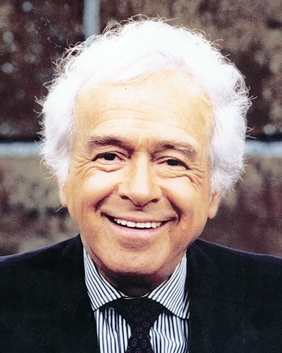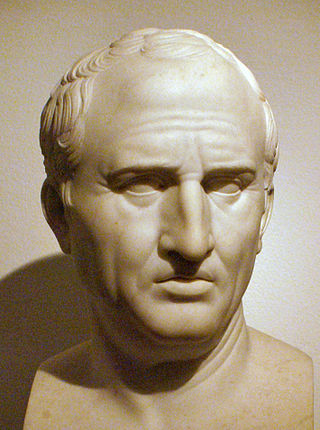
A mnemonic device or memory device is any learning technique that aids information retention or retrieval in the human memory, often by associating the information with something that is easier to remember.
The major system is a mnemonic technique used to help in memorizing numbers.
The mnemonic peg system, invented by Henry Herdson, is a memory aid that works by creating mental associations between two concrete objects in a one-to-one fashion that will later be applied to to-be-remembered information. Typically this involves linking nouns to numbers and it is common practice to choose a noun that rhymes with the number it is associated with. These will be the pegs of the system. These associations have to be memorized one time and can be applied repeatedly to new information that needs to be memorized.

Harry Lorayne was an American mnemonist, magician, and author who was called "The Yoda of Memory Training" and "The World's Foremost Memory-Training Specialist" by Time magazine. He was well known for his incredible memory demonstrations and appeared on numerous television shows–including 24 appearances on The Tonight Show Starring Johnny Carson. His book The Memory Book was a New York Times bestseller. His card magic, especially his innovations in card sleights, is widely emulated by amateur and professional magicians.

The method of loci is a strategy for memory enhancement, which uses visualizations of familiar spatial environments in order to enhance the recall of information. The method of loci is also known as the memory journey, memory palace, journey method, memory spaces, or mind palace technique. This method is a mnemonic device adopted in ancient Roman and Greek rhetorical treatises. Many memory contest champions report using this technique to recall faces, digits, and lists of words.

Daniel Tammet is an English writer and savant. His memoir, Born on a Blue Day (2006), is about his early life with Asperger syndrome and savant syndrome, and was named a "Best Book for Young Adults" in 2008 by the American Library Association's Young Adult Library Services magazine. His second book, Embracing the Wide Sky, was one of France's best-selling books of 2009. His third book, Thinking in Numbers, was published in 2012 by Hodder & Stoughton in the United Kingdom and in 2013 by Little, Brown and Company in the United States and Canada. His books have been published in over 20 languages.
The title mnemonist refers to an individual with the ability to remember and recall unusually long lists of data, such as unfamiliar names, lists of numbers, entries in books, etc. Some mnemonists also memorize texts such as long poems, speeches, or even entire books of fiction or non-fiction. The term is derived from the term mnemonic, which refers to a strategy to support remembering, but not all mnemonists report using mnemonics. Mnemonists may have superior innate ability to recall or remember, in addition to relying on techniques.
Solomon Veniaminovich Shereshevsky, also known simply as 'Ш' ('Sh'), 'S.', or Luria's S, was a Soviet journalist and mnemonist active in the 1920s. He was the subject of Alexander Luria's case study The Mind of a Mnemonist (1968).

Dominic O'Brien is a British mnemonist and an author of memory-related books. He is the eight time World Memory Champion and works as a trainer for Peak Performance Training.
The art of memory is any of a number of loosely associated mnemonic principles and techniques used to organize memory impressions, improve recall, and assist in the combination and 'invention' of ideas. An alternative term is "Ars Memorativa" which is also translated as "art of memory" although its more literal meaning is "Memorative Art". It is also referred to as mnemotechnics. It is an 'art' in the Aristotelian sense, which is to say a method or set of prescriptions that adds order and discipline to the pragmatic, natural activities of human beings. It has existed as a recognized group of principles and techniques since at least as early as the middle of the first millennium BCE, and was usually associated with training in rhetoric or logic, but variants of the art were employed in other contexts, particularly the religious and the magical.

Joshua Foer is a freelance journalist and author living in Brookline, Massachusetts, with a primary focus on science. He was the 2006 USA Memory Champion, which was described in his 2011 book, Moonwalking with Einstein: The Art and Science of Remembering Everything. He spoke at the TED conference in February 2012.

Edward "Ed" Cooke is a British entrepreneur and author of Remember, Remember: Learn the Stuff You Thought You Never Could. He is also a Grand Master of Memory and the co-founder of Memrise, a freemium online educational platform that uses memory techniques to optimise learning. He grew up in Oxfordshire.
Exceptional memory is the ability to have accurate and detailed recall in a variety of ways, including hyperthymesia, eidetic memory, synesthesia, and emotional memory. Exceptional memory is also prevalent in those with savant syndrome and mnemonists.
Eidetic memory, also known as photographic memory and total recall, is the ability to recall an image from memory with high precision—at least for a brief period of time—after seeing it only once and without using a mnemonic device.
Memory sport, sometimes referred to as competitive memory or the mind sport of memory, refers to competitions in which participants attempt to memorize then recall different forms of information, under certain guidelines. The sport has been formally developed since 1991 and features national and international championships. The primary worldwide organizational bodies are the IAM and WMSC.

Nelson Charles Dellis is an American memory athlete and consultant. He is a five-time USA Memory Champion, holding the record for most wins of the national memory champion title. He is also one of the co-founders of Memory League. Nelson also runs Climb 4 Memory - a nonprofit which "aims to raise funds and awareness for Alzheimer's disease research through mountain climbs around the world."
The USA Memory Championship is an annual competition that took place every spring in New York City until 2016, and is currently held in Orlando, Florida, after an online qualifier. It was founded by Tony Dottino, President of Dottino Consulting Group, Inc., and Marshall Tarley in 1997. Designed to test the limits of the human brain, the USA Memory Championship is an organized competition in which Memory Athletes (MAs) attempt to memorize as much information as possible in events such as Names and Faces, Cards, Random Numbers, Images, and guest information at a fictional "Tea Party". Since 2018, there is also often an event called Long-Term Memory in which the MAs are given reams of data a month in advance about a wide variety of subjects such as the Periodic Table of the Elements, Space Shuttle missions, NFL Hall-of-Famers, etc. Participation is open to US citizens who are at least 12 years of age. The competition currently consists of 9 total events, 5 of which are online qualifying events, while the last four events are held at a live event to determine the champion.
External memory is memory that uses cues from the environment to aid remembrance of ideas and sensations. When a person uses something beside one's own internal memory tricks, traits, or talents to help them remember certain events, facts, or even things to do, they are using an external memory aid. External memory aids are used every day. A large part of these aids come from technology; people use their smartphones to remind them when they have meetings and Facebook reminds people of their friends' birthdays. These aids also include taking notes in class, carrying a grocery list to the supermarket, or jotting down dates on a planner. Even people, or prompters, can be used as external memory aids.
Yänjaa Wintersoul, sometimes known as simply Yanjaa, is a Mongolian–Swedish triple world record-breaking memory champion and polyglot. She is one of only 22 international grandmasters of memory. She first rose to prominence in memory sports in 2014 by winning the team gold medal as well as first place in names and faces at the World Memory Championships 2014 in Haikou, China during her first year of memory training.








